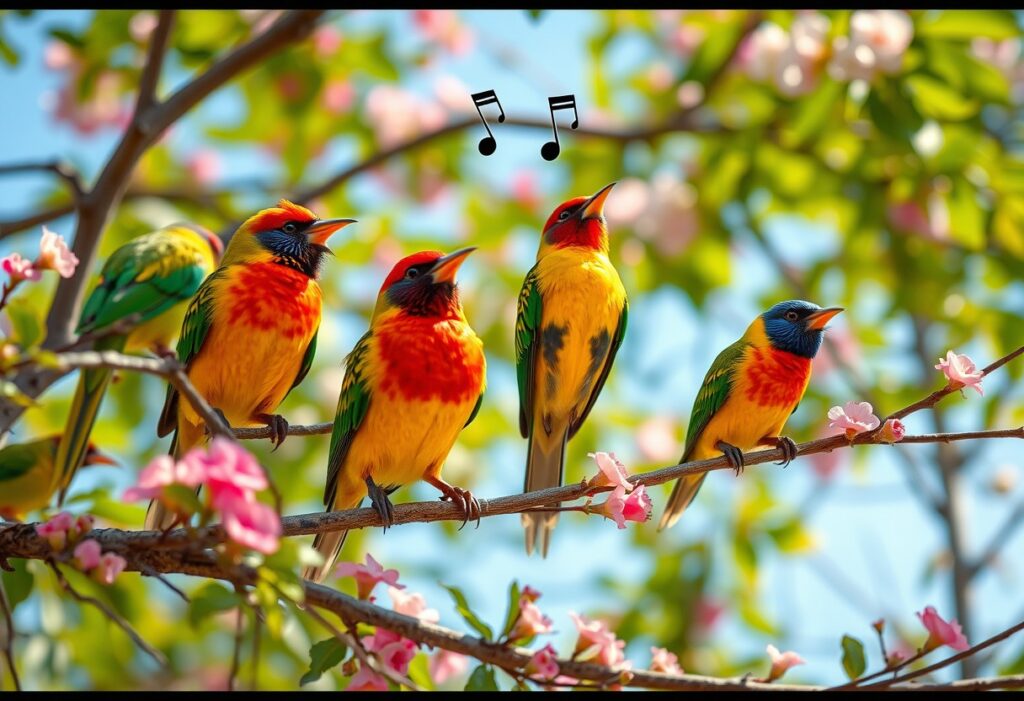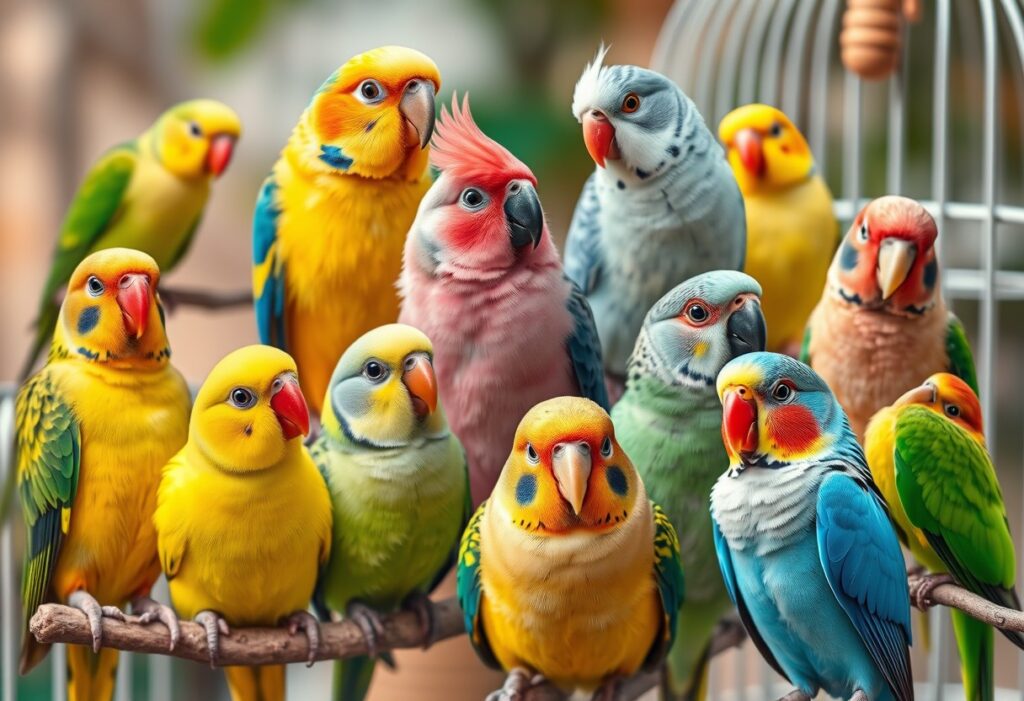Just as music captivates your soul, birdsong enchants your ears and fills the air with rhythm and melody. This fascinating phenomenon is not merely for your enjoyment; it serves vital purposes in the avian world. In this post, you will explore the biological mechanisms behind birdsong, uncover the reasons why birds sing—like attracting mates and defending territory—and gain insights into how these feathered creatures produce their stunning vocalizations. Understanding birdsong not only enriches your appreciation of nature but also reveals the complex communication systems these remarkable animals use.
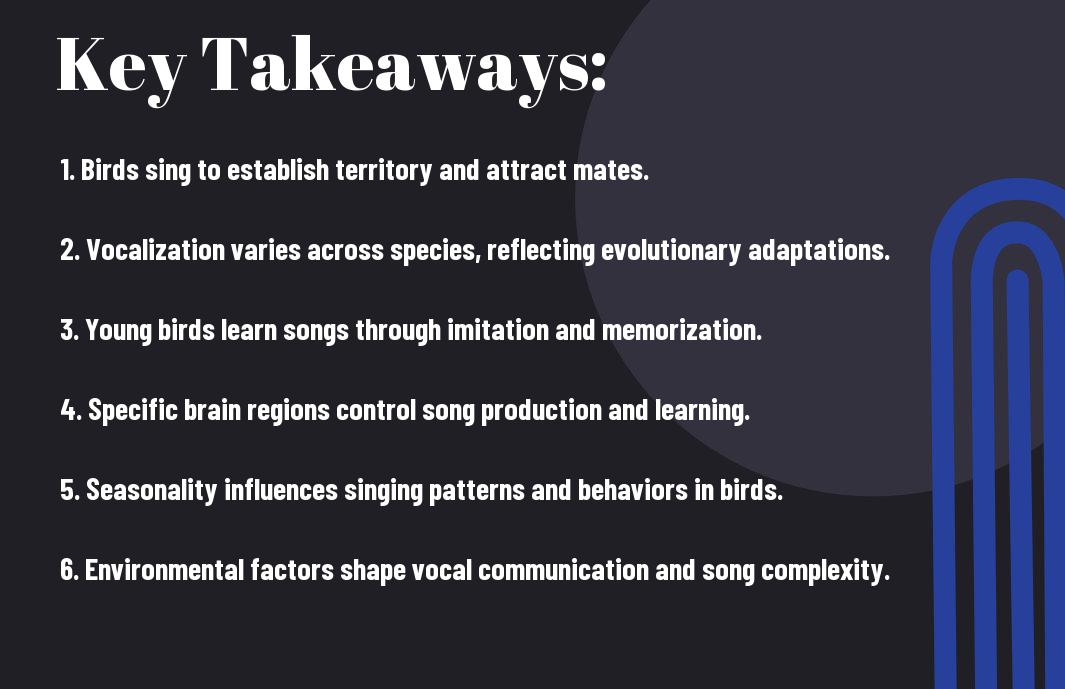
The Biology of Birdsong
The science of birdsong is a fascinating intersection of biology, behavior, and ecology. Understanding how birds produce their unique sounds requires a deep explore the anatomical structures involved and the biological mechanisms that govern these remarkable vocalizations. You’ll discover how different species have adapted their vocal organs for various purposes, from attracting mates to establishing territory, each contributing to the dynamic soundscape we hear in nature.
Anatomy of the Vocal Organ
Vocal organs in birds are primarily composed of a specialized structure known as the syrinx. Unlike mammals that utilize a larynx, the syrinx is located at the junction where the trachea splits into the bronchi, allowing birds to produce a wide range of complex sounds. You’ll find that the syrinx can change in shape and tension, enabling fine control over pitch and volume. In essence, this natural instrument is finely tuned for the specific songs of each species.
Additionally, the size and structure of the syrinx can lead to variations in song complexity among different species. For example, smaller birds typically have simpler songs, while larger species can create more elaborate vocalizations. The differences in syrinx anatomy illustrate the diversity of avian communication and how evolution has shaped birdsong over time.
The Role of the Brain
An equally critical component of birdsong lies within the bird’s brain. Research indicates that certain regions of the brain, such as the song control nuclei, are dedicated to the production and learning of songs. You should recognize that this specialization is so profound that it allows birds to learn and replicate sounds from their environment, thus creating their unique repertoire of songs. This learning process is often similar to how humans acquire language, indicating complex cognitive functions at play.
To understand this further, it’s important to note that the brain structure of songbirds changes with the seasons. During the breeding season, the size of the song control nuclei enlarges dramatically, showing that increased testosterone levels contribute to the development of vocal abilities. This seasonal brain plasticity not only influences song complexity but also correlates with the bird’s behavior and reproductive strategies.
Hormones and Seasonal Changes
Biology plays a pivotal role in how and when birds sing, with hormones influencing their vocal activities. The presence of specific hormones, particularly testosterone, triggers changes in behavior as the breeding season approaches. You’ll notice that many birds become more vocal during the spring and summer months, using their songs to attract mates and defend their territories. The interplay between hormonal changes and seasonal behaviors highlights the biological rhythms governing avian life.
Changes in environmental factors, such as day length and temperature, also play a significant role in hormone production. As these changes occur, birds become more active in their singing, and the increased testosterone levels facilitate the development of the song control regions in their brains. This intricate relationship between hormones and seasonal changes ensures that birds are well-equipped to communicate effectively during critical periods in their life cycle.
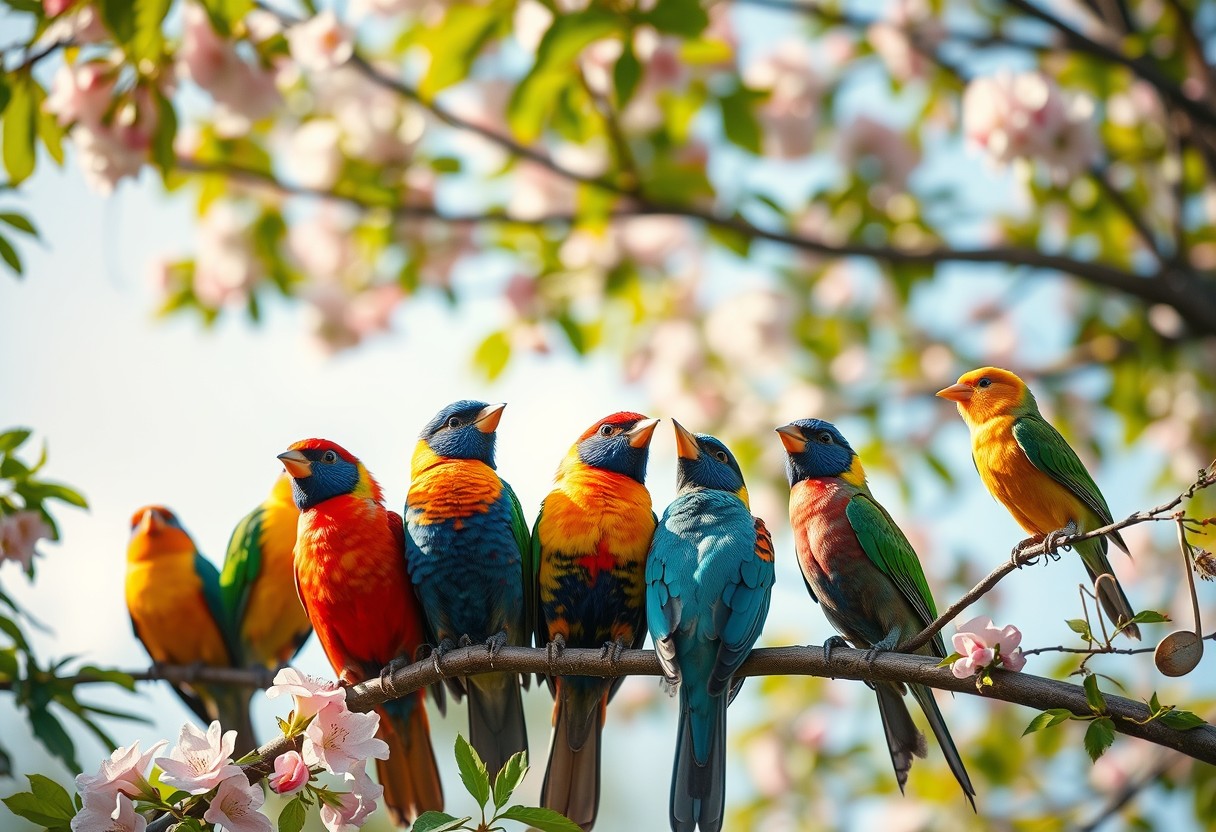
Functions of Birdsongs
Any passionate birdwatcher will quickly notice the variety of sounds that birds produce and will be intrigued by the underlying reasons for these melodies. Birdsong serves multiple functions, making it an necessary aspect of avian behavior. Understanding these functions not only enhances your appreciation of nature but also provides insight into the complex social dynamics within various bird species.
Mating Calls and Courtship
Calls during the breeding season are often elaborate and intricate, designed to attract potential mates. Male birds, in particular, will engage in vocal performances that announce not just their presence but also their fitness as a mate. These mating calls can range from simple tweets to complex melodies that can carry over long distances, ensuring that they reach the ears of potential partners. As you listen closely, you may realize that some species even have regional dialects that can reveal their origin, further enhancing their allure in the eyes (or ears) of nearby females.
In addition to attracting females, these songs serve as a way for males to assert their dominance and establish their genetic viability. Stronger, healthier males often sing more elaborate songs, and this can enhance their appeal to females. When you observe birds in their natural habitat, you may find that the most impressive vocalists often have a better chance at securing mates, demonstrating that song quality can play a significant role in the complex dance of courtship.
Territorial Defense
Territorial birds use song to mark their territory and ward off potential intruders. Your local avifauna likely employs song as a warning signal to others of their kind, establishing clear boundaries to avoid conflict. By singing, these birds communicate their strength and claim over resources, which can often lead to fierce battles if their territory is challenged. The variations in pitch, volume, and repetition of a song can signify different things, such as the urgency of the threat or the strength of the territory holder.
Defense of territory using song is particularly important during breeding seasons when resources like food and nesting sites are in high demand. When you hear aggressive or territorial songs, it’s a reminder that these avian inhabitants are not merely making noise; they are actively defending their nesting grounds and ensuring that their offspring have the best chances of survival.
Social Interactions
With the complex social structures found within bird communities, songs can facilitate a variety of interactions beyond mating and territory defense. Birds communicate not just with their own species, but also with others, making their songs a vital tool for cooperation and navigation. Through their songs, birds can convey important information such as food availability, alert others to potential dangers, or even coordinate movements within a flock.
To truly understand the impact of these social interactions, consider how they manifest in communal settings. For example, you may notice that when you observe a flock of birds, their coordinated songs and calls can help maintain group cohesion. The intricate signaling allows for a cohesive response to threats, ensuring a higher rate of survival. Your ability to recognize these vocalizations will not only deepen your connection to nature but will also foster a greater appreciation for the intelligence and social structure of birds.
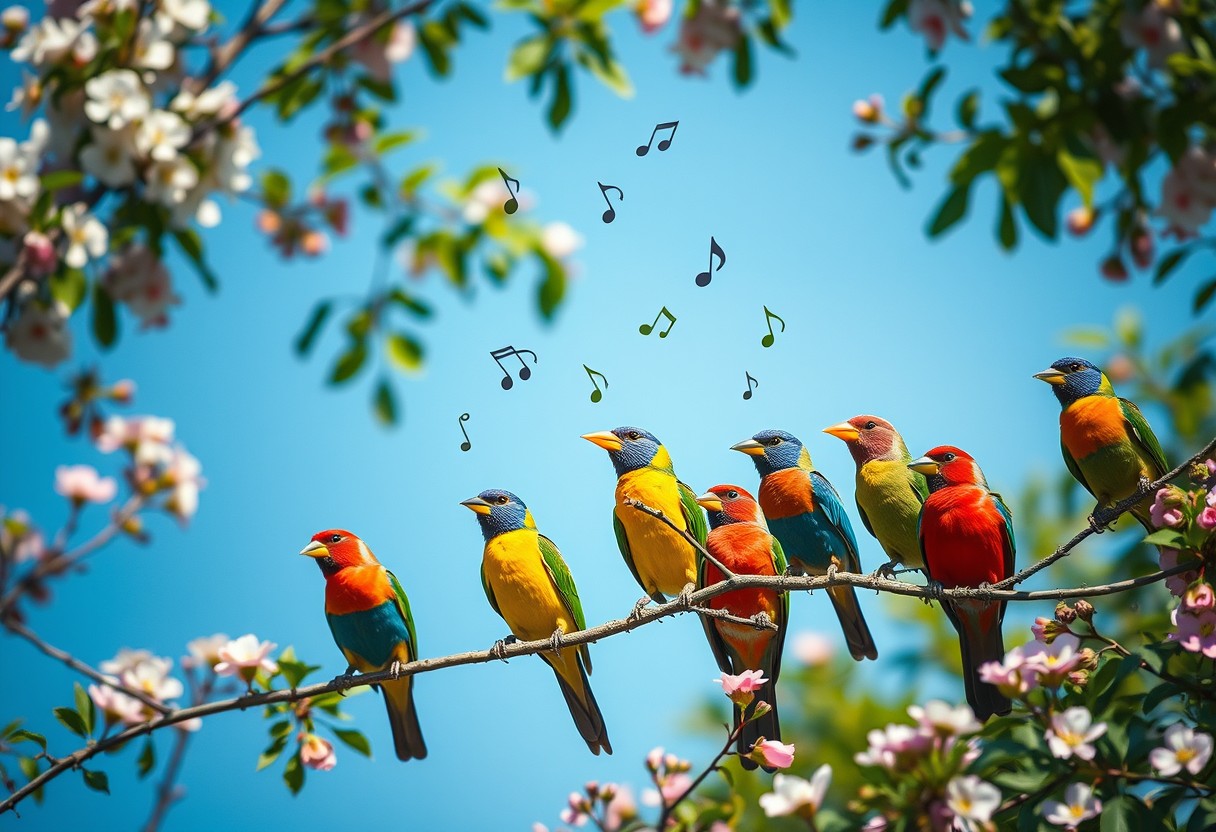
The Learning Process
Once again, the intricate world of birdsong introduces you to the amazing learning processes that young birds undergo. Your understanding of these processes will not only deepen your appreciation for this remarkable behavior but also highlight the significance of their social environment in shaping their musical compositions.
Song Learning in Young Birds
For young birds, the journey of learning their species-specific songs often begins shortly after they leave the nest. During this critical period, they become immersed in their surroundings, listening to adult birds and mimicking the sounds they hear. This phase is known as the sensorimotor phase, where they are particularly receptive to the complex melodies and rhythms created by their parents and other experienced singers. Through repeated listening and practice, they gradually refine their vocalizations, making it imperative for them as they develop their unique song.
For many bird species, this learning process can take weeks, or even months, depending on the complexity of the song. It’s fascinating to observe that certain young birds go through a two-stage learning process. Initially, they memorize the song’s structure, and secondly, they start to practice producing it themselves, often resulting in variations of the original tunes. This underscores the importance of a supportive environment, as birds that lack exposure to appropriate song models may develop incomplete or distorted songs, which could hinder their ability to attract mates in the future.
Cultural Transmission of Songs
For many bird species, the process by which songs are passed down through generations is known as cultural transmission. This concept highlights the social aspect of birdsong learning, where young birds not only learn from their immediate parental figures but also adapt and modify their repertoires based on what they hear from neighboring birds. This leads to a dynamic and evolving song culture within flocks, where certain tunes may become more prevalent while others fade away.
Plus, the cultural transmission of songs is critically important for the survival and reproduction of these birds. The ability to learn from various sources allows for the development of distinct dialects or regional song variations. These differences can even act as markers of territorial boundaries, helping to delineate between groups of birds and prevent conflicts. It’s a remarkable example of how social learning impacts communication and identity among avian species.
Impact of Environment on Learning
Learning in young birds is significantly influenced by their environment, with factors such as the presence of adult tutors, habitat acoustics, and social interactions playing a pivotal role. The variety of sounds in their surroundings helps to shape their learning experience and play a part in song complexity. For instance, urban environments may introduce birds to a cacophony of unnatural noises, which can alter their learning trajectory, requiring them to modify their songs to be heard over the din of traffic and human activity.
Environment also dictates the availability of song tutors, and without proper mentors, young birds are at a higher risk of developing improper techniques or entirely missing out on learning crucial aspects of their songs. In contrast, a rich and supportive environment filled with experienced singers provides ample opportunity for young birds to acquire and practice their tunes effectively, thereby enhancing their chances of reproductive success.
Environment plays an imperative role in shaping a bird’s learning experience. Changes such as habitat destruction, noise pollution, or lack of social interactions can drastically impact song learning, affecting both individual birds and entire populations. When the natural landscape is altered, the delicate balance of song culture may be compromised, resulting in a decline in song proficiency and diversity. Being aware of these environmental pressures can help us understand the ongoing challenges faced by avian communities and reinforce the need for conservation efforts.
Conclusion
Conclusively, understanding the science behind birdsong enriches your appreciation for the natural world. As you examine deeper into the mechanisms of how birds produce intricate melodies, you realize the profound connections between their vocalizations and survival strategies. Whether it’s attracting mates, marking territory, or communicating with flock members, each note serves a purpose that contributes to the continuity of the species. Your awareness not only elevates your enjoyment of birdwatching but also emphasizes the importance of conserving habitats where these melodic creatures thrive.
Furthermore, as you explore the physiological aspects of birdsong, you begin to recognize the marvel of nature’s engineering. The anatomy of birds, from the syrinx to their specialized musculature, showcases the evolutionary adaptations that make these vocal performances possible. You can engage with your environment more meaningfully, knowing that every trill and trill stems from a complex interplay of evolutionary pressures and environmental factors. So next time you hear the sweet sound of a bird serenading the dawn, you can appreciate not just the beauty, but the intricate science that creates such awe-inspiring moments.
Q: What is the primary purpose of birdsong?
A: The primary purpose of birdsong can vary among species, but it generally serves several key functions. Firstly, it is a vital means of communication, allowing birds to convey information about territory, attract mates, and establish dominance. Male birds often sing to create an audible boundary around their territory, warning other males to stay away. Additionally, during the breeding season, elaborate songs can attract potential mates by showcasing the singer’s health, vigor, and genetic fitness. It can also serve as a social tool within flocks, helping to maintain cohesion among group members.
Q: How do birds produce their songs?
A: Birds produce their songs using a specialized vocal organ called the syrinx, located at the base of their trachea. The syrinx is unique to birds and allows them to create a wide variety of sounds. When air from the lungs passes through the syrinx, muscles adjust the shape and tension of its walls, enabling birds to modulate pitch and volume. This intricate process enables birds to produce not just melodious songs, but also complex calls and sounds. Neural pathways in the brain, especially those involved in learning and memory, play a crucial role in the development and refinement of a bird’s song throughout its life.
Q: How do young birds learn to sing?
A: Young birds typically learn to sing through a process known as vocal learning, which is most pronounced in species that have complex songs, like songbirds. Learning occurs in two main stages: sensory acquisition and sensorimotor development. During the sensory acquisition phase, juvenile birds listen to the songs of adult males, often their fathers, memorizing the patterns and structures of the songs. The sensorimotor phase involves practice; the young birds attempt to replicate the sounds they have learned. During this phase, they may produce suboptimal versions of the song, known as ‘plastic songs,’ which they refine over time as they gain feedback from their environment and peers. This process can take weeks to months, resulting in a song that is unique to each individual, reflecting both genetic predisposition and environmental influences.
